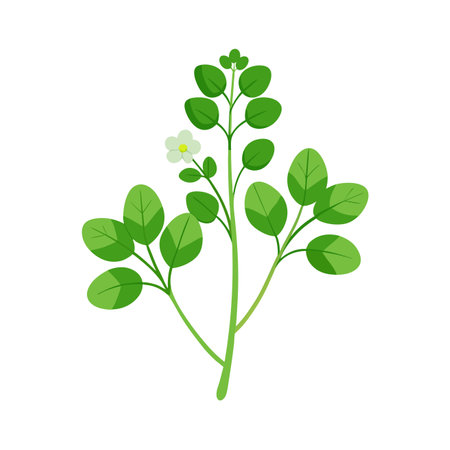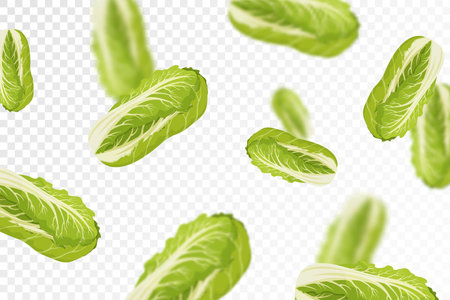Introduction to Stinging Nettle in British Culture
Stinging nettle, known botanically as Urtica dioica, has woven itself into the very fabric of British rural life for centuries. Often found flourishing along country lanes, woodland edges, and hedgerows, this humble plant is far more than a mere weed. In the UK, stinging nettle holds a rich legacy of traditional use, from the kitchen to the medicine cabinet, and even in local folklore. For generations, British families have foraged young nettle shoots in springtime—a cherished countryside custom—turning them into nourishing soups or herbal teas. Beyond its culinary value, nettle has long been celebrated for its restorative properties, featuring prominently in home remedies passed down through the ages. Folklore tells of nettles being used to ward off evil spirits or as a symbol of protection around homes and gardens. Whether woven into stories or gathered for their healthful benefits, stinging nettles remain an enduring part of Britain’s natural heritage and seasonal rhythms.
Nutritional Profile of Stinging Nettle
Stinging nettle, or Urtica dioica, has long held a cherished place in British herbal traditions, particularly for its impressive nutritional content. When it comes to natural health and wellness, nettles are celebrated for offering a remarkable array of vitamins, minerals, and antioxidants that support overall vitality. Below is a closer look at the key nutrients found in stinging nettles and their benefits as valued by those who favour wholesome living in the UK.
Rich Source of Essential Vitamins
Nettle leaves are especially abundant in vitamins A, C, K, and several B vitamins. These nutrients play important roles in supporting immunity, skin health, energy production, and blood clotting—qualities that align with the British emphasis on everyday wellness and prevention.
| Vitamin | Health Benefit |
|---|---|
| Vitamin A | Supports vision and immune function |
| Vitamin C | Aids collagen production; boosts immunity |
| Vitamin K | Promotes healthy blood clotting and bone strength |
| B Vitamins (e.g., B1, B2, B5) | Enhance energy levels and nervous system health |
Packed with Minerals for Everyday Balance
Stinging nettle is also revered for its mineral content, including iron, calcium, magnesium, potassium, and silica. These minerals contribute to maintaining strong bones, balanced blood pressure, and overall resilience against daily stresses—a nod to the traditional British approach of nurturing the body naturally.
| Mineral | Main Benefit |
|---|---|
| Iron | Supports red blood cell formation and energy levels |
| Calcium & Magnesium | Strengthen bones and soothe muscle tension |
| Potassium | Helps regulate fluid balance and blood pressure |
| Silica | Promotes hair, skin, and nail health |
Naturally Occurring Antioxidants
The antioxidant content in stinging nettle—such as polyphenols, carotenoids, and flavonoids—helps defend against oxidative stress. This is particularly appreciated within British wellness circles that value gentle yet effective ways to support longevity and reduce inflammation through diet.
Together, these nutrients highlight why stinging nettle has remained a staple in traditional British remedies. Its well-rounded profile not only nourishes but also supports holistic wellbeing in a way that feels both time-honoured and refreshingly natural.

3. Digestive and Immune Support
In Britain, stinging nettle has long held a cherished place in the world of herbal wellness, particularly as a gentle tonic for digestion and immunity. One of the most popular ways to enjoy its benefits is through nettle tea, often brewed using young spring leaves. This mild, earthy infusion is traditionally sipped after meals to ease digestive discomfort, help settle the stomach, and encourage regularity—an approach passed down through generations in rural English communities.
Nettle infusions are also valued for their natural ability to support the immune system. Rich in antioxidants and vitamin C, nettle tea is sometimes blended with other local herbs like elderflower or mint for an extra boost during the colder months. Many British families keep dried nettle leaves on hand to make restorative brews when feeling under the weather, following recipes that have been part of household remedy books for centuries.
Traditional British Recipes
Nettle Tea
To prepare a classic British nettle tea, simply steep a handful of fresh or dried nettle leaves in hot water for 5–10 minutes, strain, and enjoy with a slice of lemon or a spoonful of local honey if desired. This soothing beverage not only aids digestion but also helps fortify the body’s defences naturally.
Nettle Infusion Blends
Another favourite is a nettle and elderflower infusion, which combines the immune-boosting properties of both plants. Gently simmering these herbs together creates a fragrant drink that’s especially comforting on chilly evenings or at the first sign of a seasonal sniffle.
Whether enjoyed as a simple cup of tea or as part of more elaborate herbal blends, nettle remains a staple in British kitchens and apothecaries. Its use reflects a deep-rooted respect for natural remedies—offering gentle digestive relief and immune support while connecting us to the enduring rhythms of the countryside.
4. Soothing and Anti-inflammatory Qualities
Stinging nettle has long been cherished in the UK for its gentle, natural ability to soothe discomfort and reduce inflammation, making it a staple in holistic wellness routines. Many people seeking relief from joint pain or inflammatory conditions such as arthritis turn to nettle as a time-honoured remedy. The plant’s leaves contain an array of beneficial compounds—such as polyphenols and flavonoids—that are believed to help calm the bodys inflammatory response.
One of the most popular approaches among British wellness enthusiasts is to enjoy nettle tea or use nettle supplements, both of which are widely available at local health food shops. These preparations are appreciated for their mild, earthy flavour and their potential to ease symptoms like swelling, stiffness, and aching joints without relying on harsh chemicals or synthetic medications.
Popular Ways Nettles Are Used for Inflammation Relief in the UK
| Method | Description | Common Use |
|---|---|---|
| Nettle Tea | Infusing dried nettle leaves in hot water | Sipping daily to support joint health |
| Nettle Supplements | Capsules or tinctures made from nettle extract | Convenient option for busy lifestyles |
| Topical Nettle Creams | Creams containing nettle applied directly to skin | Targeted relief for sore muscles and joints |
Holistic Harmony with Local Traditions
In keeping with traditional British herbalism, many UK residents blend nettle into their daily self-care rituals, often combining it with other native herbs such as elderflower or chamomile for enhanced comfort. This holistic approach not only honours centuries-old practices but also aligns with modern desires for gentle, plant-based solutions to everyday aches and pains.
5. Incorporating Nettle into Everyday Diet
Adding stinging nettle to your daily meals is a delightful way to boost nutrition while embracing a long-standing British tradition. With its earthy, spinach-like flavour, nettle can be used in a variety of familiar dishes. Always remember to handle fresh nettles with gloves and blanch them briefly to remove their sting before cooking or brewing.
Soups and Seasonal Favourites
Nettle soup is a cherished classic across the UK, especially during springtime when young shoots are at their best. Simply substitute nettle leaves for spinach in soups or stews, pairing well with British staples like potatoes, leeks, or wild garlic. You might also try adding finely chopped blanched nettles to omelettes, savoury muffins, or homemade pies for an extra green boost.
Nettle Tea and Infusions
Nettle tea is popular for its gentle, restorative qualities. To make your own, steep a handful of dried or freshly blanched leaves in hot water for 5–10 minutes. Enjoy on its own or blended with mint or lemon balm for added flavour. This soothing brew fits naturally into daily routines as a caffeine-free alternative to black tea.
Sustainable Foraging and Responsible Sourcing
If you wish to forage nettles yourself, choose locations away from busy roadsides and agricultural sprays—parks and nature reserves often have healthy patches. Pick only the tender top leaves and always leave enough for local wildlife and regrowth. Alternatively, many health food shops and farmers’ markets across Britain now offer dried nettle or pre-packed fresh bunches, ensuring you can enjoy this supergreen year-round without disturbing local ecosystems.
Tips for Safe Preparation
Always wear gloves when handling raw nettles. Blanch leaves quickly in boiling water—this neutralises the stinging hairs and preserves nutrients. Once prepared, use them as you would other leafy greens: stir into risottos, blend into pestos, or sprinkle over baked potatoes for an authentic touch of British countryside wellbeing.
6. Precautions and Good Practice
While stinging nettle is a nutritional powerhouse, it’s important to handle it with care and respect, both for your own safety and the wellbeing of the UK countryside. Here’s a brief guide to staying safe and responsible when enjoying this wild herb.
Handling Nettles Safely
Nettles are well-known for their sting, caused by tiny hairs on the leaves and stems. To avoid discomfort, always wear gloves when harvesting or preparing fresh nettles. Use scissors or garden shears to snip off the top few leaves, as these are the most tender and nutritious. Once picked, a quick blanch in boiling water will neutralise the sting, making them safe to eat.
Foraging Etiquette in the British Countryside
When foraging in the UK, it’s essential to follow local guidelines and respect nature reserves and protected sites. Take only what you need, leaving plenty behind for wildlife and regrowth. Stick to public footpaths and rights of way, and always seek permission if you’re unsure about land ownership. Avoid areas that may have been sprayed with pesticides or are close to busy roads.
Who Should Approach Nettle Consumption With Care?
While most people can enjoy nettles as part of a healthy diet, certain groups should take extra care. If you are pregnant, breastfeeding, or taking medications such as blood thinners or diuretics, consult your GP before adding nettles to your diet. People with kidney issues should also be cautious due to nettle’s natural diuretic properties.
In Summary
Stinging nettle can be a nourishing addition to your meals when handled properly. By following simple safety tips and practising thoughtful foraging in the British countryside, you can enjoy all the benefits this humble plant has to offer while caring for yourself and the environment.


